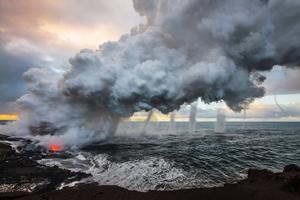Geophysical and Astrophysical fluid systems are often studied in idealized contexts that ignore complexity and evolution in thermodynamic and topological characteristics of the system. These may arise from relatively simple, quasi-linear changes in thermodynamic properties (such as small density changes) and irregular boundary conditions, or more complicated effects involving radiation, phase changes, and complex, evolving surfaces. Often, natural phenomena comprise various sub-systems that have different physical properties, such as density, compressibility, thermal and inertial effects, for example rock-water or fluid-gas-ice interfaces. The interactive couplings of these sub-systems occur via exchanges of material, energy, momentum at the interfaces that separate them. The couplings not only change the physical and dynamical properties of each component but also cause the changes in the interfaces themselves, such as deformation, growing and shrinking or even depletion, as in dissolving, accrediting, or melting boundary effects.

